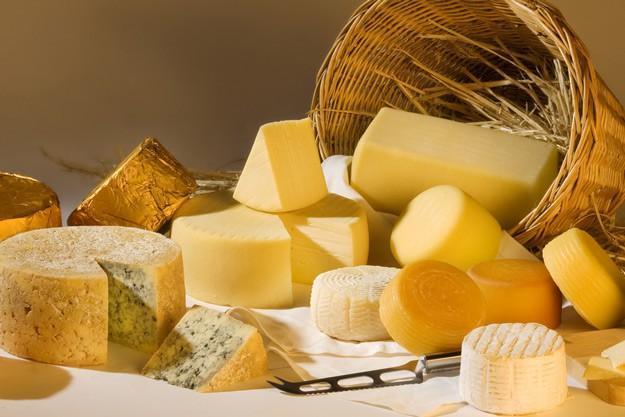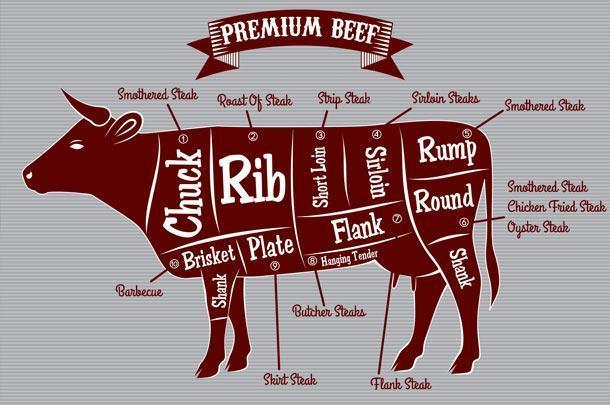10 Amazing Facts About Cheese You Need to Know
As a Taste of Home editor living in Wisconsin, it’s safe to say I’m a big fan of cheese. Fried cheese curds at a microbrewery, a generous sprinkling of pecorino Romano on a plate of spaghetti, or a wine and cheese night with the girls…I love it all. Recently I took a trip to Door County (that long peninsula in Wisconsin jutting into Lake Michigan), visiting cheese factories and sampling artisan cheeses from across America’s Dairyland. I picked up some pretty fascinating facts that changed the way I think about cheese. Read on!
1. Cheese was created over 4,000 years ago-by accident
As a Taste of Home editor living in Wisconsin, it’s safe to say I’m a big fan of cheese. Fried cheese curds at a microbrewery, a generous sprinkling of pecorino Romano on a plate of spaghetti, or a wine and cheese night with the girls…I love it all. Recently I took a trip to Door County (that long peninsula in Wisconsin jutting into Lake Michigan), visiting cheese factories and sampling artisan cheeses from across America’s Dairyland. I picked up some pretty fascinating facts that changed the way I think about cheese. Read on!
1. Cheese was created over 4,000 years ago-by accident
Amazingly, one of our favorite foods might never have been discovered if it weren’t for a mistake. Legend has it the first cheese was created accidentally, by storing milk in a container lined with an animal’s stomach. An enzyme from the stomach caused the milk to separate into liquid (whey) and solids (curd). The curd? That’s cheese. (Want to learn to make cheese at home?
Amazingly, one of our favorite foods might never have been discovered if it weren’t for a mistake. Legend has it the first cheese was created accidentally, by storing milk in a container lined with an animal’s stomach. An enzyme from the stomach caused the milk to separate into liquid (whey) and solids (curd). The curd? That’s cheese. (Want to learn to make cheese at home?
2. It takes 10 pounds of milk to make just 1 pound of cheese.
That’s right-and the best way to ensure that milk turns into delicious cheese is to make sure dairy cows eat a healthy diet. Cows eat about 90 pounds of feed every day and produce 2,604 gallons of milk per year. That can make a lot of cheese!
3. Over 25% of cheese in the U.S. is made in Wisconsin (the rest comes mostly from California, Idaho and New York). More than half the nation’s artisan cheese is made in Wisconsin.
Listen, there’s a reason we call ourselves cheeseheads. Not only does Wisconsin make a LOT of cheese, but our farmers make GOOD cheese. The Dairy State wins over half the prizes at the U.S. Championship Cheese Contest each year. (Yes, that’s a thing; yes, I want to go, too.) Wisco cheesemakers have won one-third of the honors at the World Championship Cheese Contest, a competition that’s been around since the 1950s.
4. Some cheeses are illegal in the United States.
Because of safety concerns related to bacteria, the FDA has banned certain cheeses from entering the United States. These include cheeses made with raw milk and aged under 60 days, including Brie de Meaux, Reblochon, Valencay, Epoisses, Roquefort and Camembert de Normandie. You’ll have to travel to France to indulge in these specialty cheeses. (Until then, you can just make really great French food right at home.)
5. Cheese caves are a real thing.
Storing cheese in caves, whether natural or man-made, helps to age them and imparts another level of flavor. Caves are cool and humid, which is exactly what cheese needs to age properly. European cheesemakers used natural caves before we had modern refrigeration. Today, American cheesemakers usually construct their own cheese caves, which allows them to regulate temperatures and humidity levels to the exact specifications a certain cheese needs. Pretty cool!
6. Mice don’t like cheese.
Despite popular belief, mice actually don’t like cheese. Given the choice, they prefer sweets and carbs. Sure, they’ll eat cheese if it’s the only thing around, as most animals would, but they don’t particularly love it. (Hey, we enjoy a good sweet ourselves.)
7. Lactose-intolerant people can eat cheese.
If you’re lactose intolerant, you don’t have to say goodbye to cheese forever! Just pick the right kinds. Aged cheeses have less lactose than fresh and usually can be enjoyed without discomfort. Think cheeses like Brie, Camembert, cheddar, Gouda, Muenster, Parmesan, provolone and Swiss. Not too shabby a cheese plate! (Did you know cheesy foods can also be light?)
8. There’s a reason certain cheese names are capitalized.
If a cheese is named after a city (or country-hello, American!), it’s capitalized. Examples include Asiago, Brie, Camembert, Gouda, Gruyere and Parmesan. (I’d love to live in the city of Parmesan!) Cheeses that aren’t capitalized include cheddar, feta, fontina, mozarella and provolone.
9. Curd sizes yield different types of cheese.
Large curds yield softer cheeses, such as ricotta and mascarpone. Small curds yield hard cheeses-think Parmesan and Romano.
10. There are 60 Master Cheesemakers in the United States…and every one of them lives in Wisconsin.
OK, so technically Wisconsin is the only state that has a Master Cheesemaker program. But still, this is a pretty big deal and a mighty intense process. Before entering the program, you need to have a cheesemaker’s license for 10 years-a process that requires 250 school hours and a six-month apprenticeship. And yes, Wisconsin is the only state to require cheesemakers to have a license. Maybe that’s why we think Wisconsin makes the best cheese in the United States.




